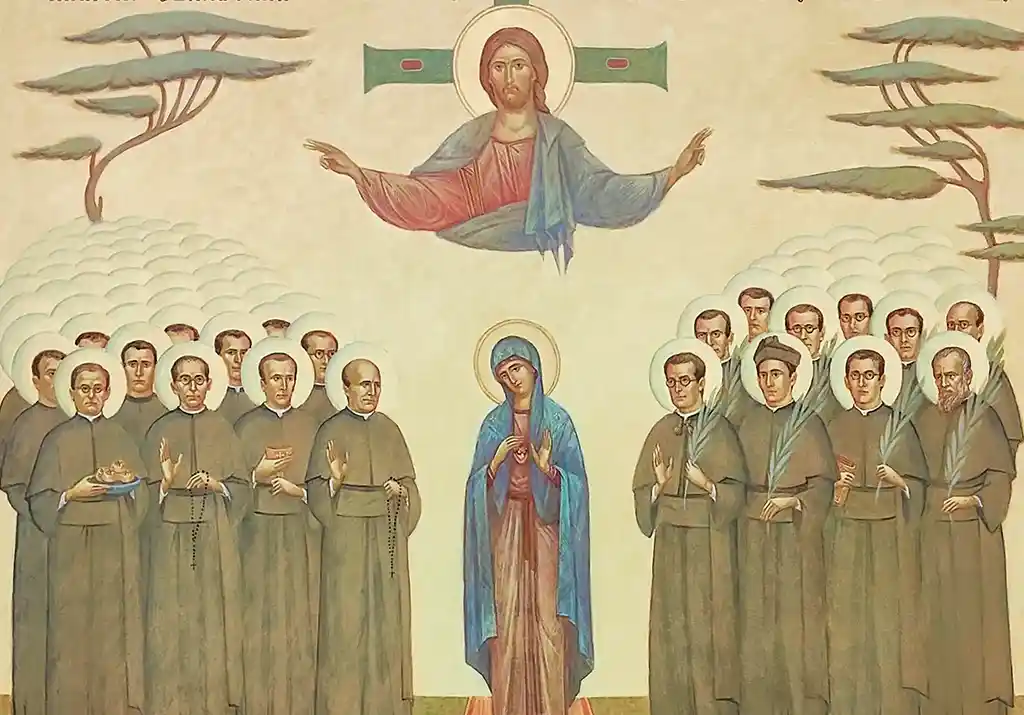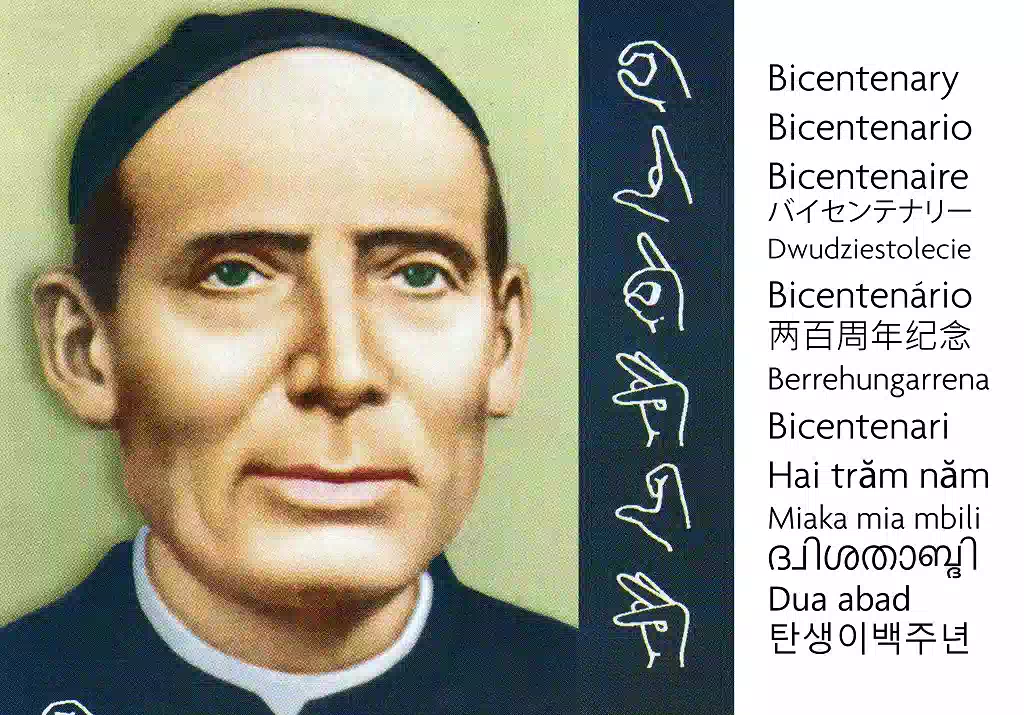Little was spoken about what was the first mission of a Congregation that, with barely 20 years and an exile in its steps, knew how to undertake a task that allowed it to face adversities, recreate strategies and define possibilities.
The mission of the Claretians in Algiers began in the exile of Prades, where the missionaries found themselves after the expulsion from Spain because of the September Revolution (1868). This forced abandonment presupposed that the community would assume some familiar ministries but did not prevent the opening to the novelty that came through the mediation of Abbot Sabbatier who, in a visit to the city of Prades, towards July 1869, spoke with the then Father General , José Xifré. The proposal was clear, there was need of missionaries to attend to the Spanish population in Algerian lands, and Father General believed that our missionaries could be the adequate ones. This initiated the communications with the archbishop of Algiers, Mons. Charles Lavigérie, who offered hospitality and ministries that the missionaries may settle in. The first step was taken by Fr. Xifré who travelled towards the beginning of the month accompanied by Bro. Capdevilla to prepare the house where he received the first missionary community on October 8.
This mission, which expected the best, had a background that soon alarmed the missionaries and redirected the strategies. The Spanish population in Algiers had been increasing approximately since 1830, when workers from Murcia and Alicante moved as seasonal farmers towards the North Africa. These migrations, which also included Maltese and Italians, gradually became a population that stabilized itself in different parts of the country; resulting in the movement of complete families of Spaniards who occupied spaces with their own culture creating neighbourhoods where Spanish dominated, with variants of Alicante and also some Catalan presence. A French testimony says: “Sober and industrious, these poor Andalusians work all week, but, on Sunday, they indulge themselves in the noisiest demonstrations, with an entirely southern joy.” One who comes from outside, introduces his otherness, and this nineteenth-century Spanish migration was no exception. Here is, however, an important link, since the Spanish presence in Algiers is not only presence but also cohabitation with other cultures in a territory that does not belong to them, since this portion of Africa was also colonized by the French since 1830. This is not a minor issue, since it will involve the coexistence, not always peaceful, of two different systems in organization and production of habitus.
Given this brief look at the territory, it entails that the presence of the Claretians meant facing this mosaic of cultures, at a time when concepts such as interculturality, mission ad gentes or the migratory sensitivity of today were not part of the thought process. The arrival of the missionaries was for the care of the Spaniards and that was the focus of the efforts, because the observations made of the panorama demanded attention and action. Fr. Joaquín Oller, after knowing the realities of Oran, will say in letters to Fr. Xifré: “How pitiful is the neglect in which the Spaniards of that diocese are”. It is true that French priests generally understand and speak Spanish, though not preach; and yet God knows how they treat our compatriots, so they live pitifully.” The letter, present in the General Archive of the Congregation, refers to a lamentable state of the Spaniards due to the lack of pastoral attention in their own language, and does not omit that the presence of French clergy is insufficient or even controversial.
The delicate situation, as the missionaries testify, led to a production, or rather reproduction of missionary strategies as they had imagined them after the model of popular missions lived in Catalonia. Inside the community “the rules of Spanish houses are respected”; as part of the ministries, there are rosaries, novenas, sermon preaching and devotions in places even outside Algiers. Seeing that this might not be enough, creativity was encouraged and the implementation of a place of worship for the specific mission with Spaniards was decided and, as if that were not enough, around 1873 the first school was born in Algeria under the responsibility of the Congregation. The evangelizing ambition was then combined with an educational need, so that the migrant Spanish population could learn the alphabets and the morality necessary to live; objectives not very remote if you want the educational ideal of the nineteenth century but at the same time an extraordinary method given that in Spain itself a large part of the population was illiterate. However, this reduplication of reality does not cease to attract attention, wanting to reproduce Spanish models in strange lands, where it would not be unreasonable to think of a participation in the colonizing system that was prevalent in XIX century; this which seems like wishful thinking, somehow resulted in the beginning of conflicts or irritations within the missionary system; and in this which is a description value judgments should be avoided.
The first conflicts emerged within the community, where not all missionaries understood the mission of the Congregation in the same way; because for some the aim could be the popular missions for others it was the preaching of retreats. There were those who cared about the proper administration of sacraments and there were those who inquired about the best way of proclaiming the gospel, which could mean many things. Another possible reason for deterioration was the non-incorporation of differences, in a diverse territory and in different life patterns, where the language could share words but not necessarily concepts. Outside the community, the link with Archbishop Lavigérie had some friction, and also the local French clergy, and this may be because in the Cardinal’s mind the mission involved other coordination, as reflected in the foundation of the White Fathers and a congregation of religious. Among them, faintly appears the idea of inculturation, where it mattered the seeming interlocutor of the mission, who in this case were the Muslims of North Africa. Finally, a point not less, but also important, was the economy that determined the actions of the Congregation, since there was no clarity about who should finance the missionary enterprise, if it was something that depended on the local Church or the Spanish government, and at the same whoever it was, this presupposed putting in order the modus operandi and the response of the missionaries. The observation that summarizes these conflicts comes to us in the words of Fr. Hilario Brossosa, for whom “that foundation is, in truth, history of dislikes”.
In short, the mission of Algiers, which closed its doors in 1888, can focus on how the missionary self-understanding of the Congregation arose, the elaboration of the concept of mission and the concrete expression of its apostolate. Almost simultaneously occur the foundations in Chile and in Fernando Poo (Equatorial Guinea), but each one made a distinct journey and its results depended a lot on how they resolved the notions about the mission of the Congregation in foreign lands. This memory is thus open to visualize that every question about the past is born in present, and in the same way a response from the past serves for the praxis of everyday life to create new questions.









